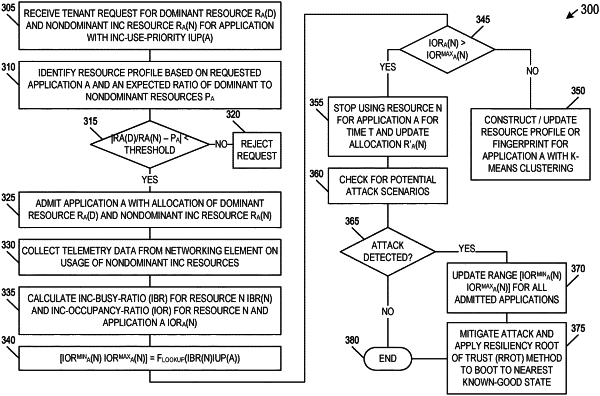| CPC H04L 47/72 (2013.01) [H04L 47/74 (2013.01)] | 22 Claims |

|
1. A system for managing dominant edge/cloud computing resources, the system comprising:
memory controller processing circuitry; and
a memory that includes instructions, the instructions, when executed by the memory controller processing circuitry, cause the memory controller processing circuitry to:
receive a computing job request from a client computing device at a resource manager, the computing job request including a dominant resource request for a dominant resource and a non-dominant resource request for a non-dominant resource, the dominant resource including a first computing resource whose specifications constrain an execution of the computing job request;
determine a proportional allocation of the non-dominant resource request and the dominant resource request;
allocate, based on the proportional allocation, the non-dominant resource request to the non-dominant resource and the dominant resource request to the dominant resource;
issue a request to cause the execution of the computing job request at the non-dominant resource and the dominant resource;
receive a resource telemetry generated during execution of the computing job request, the resource telemetry including a non-dominant resource usage telemetry generated at the non-dominant resource and a dominant resource usage telemetry generated at the dominant resource during execution of the computing job request;
determine, based on the resource telemetry, that the computing job request includes a non-dominant resource usage attack;
issue a request to cause the computing job request to be halted based on the resource telemetry;
add the client computing device to a client device blocklist; and
prevent a subsequent client job request from the client computing device.
|